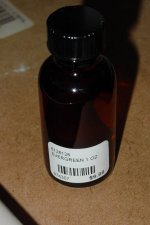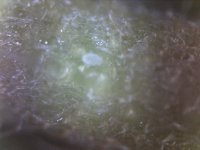Has anyone seen a small translucent mite that seems to feed predominantely on pitils vs leaves?
My experience with the larger red / 2-spotted mite is that they avoid higher THC areas of the plant...living mostly on the leaves.
I was wondering why the pistils on my indoor had turned brown 3 weeks into flower. I got out my 30x hand microscope and saw the developing bud sites were under attack but didnt find any on leaves I checked out.
Pyrethrum tonight!
My experience with the larger red / 2-spotted mite is that they avoid higher THC areas of the plant...living mostly on the leaves.
I was wondering why the pistils on my indoor had turned brown 3 weeks into flower. I got out my 30x hand microscope and saw the developing bud sites were under attack but didnt find any on leaves I checked out.
Pyrethrum tonight!





 Good Luck and dont be scared to pull out the chems on these dudes..they will not die any other way
Good Luck and dont be scared to pull out the chems on these dudes..they will not die any other way Happy New Year
Happy New Year
